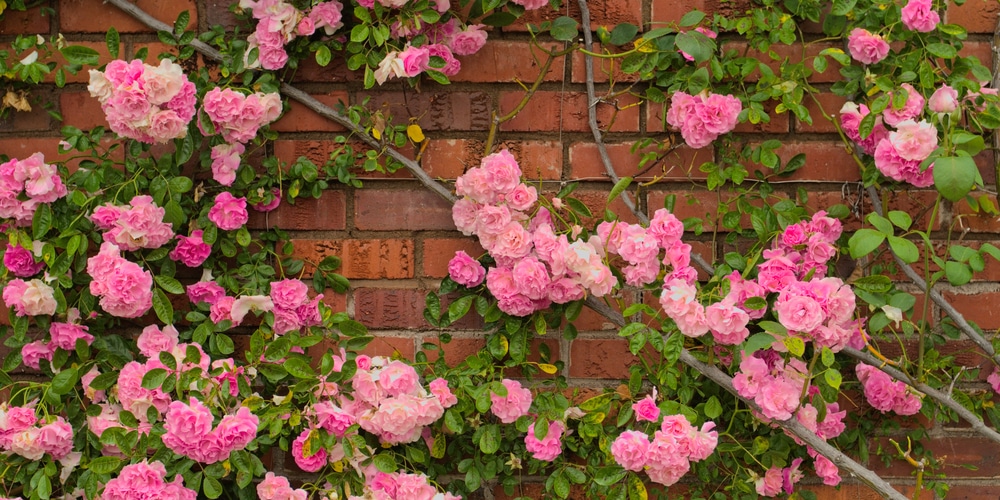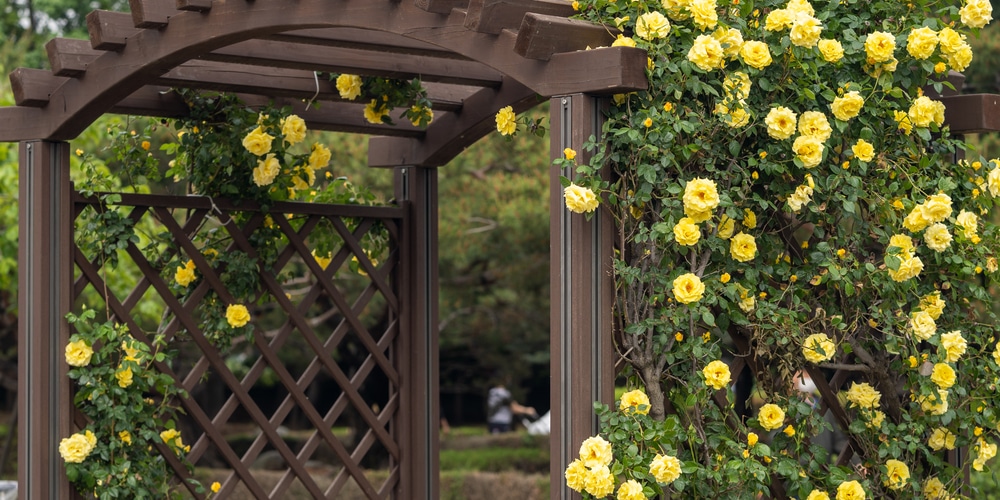Who doesn’t like the way roses make any garden look more delicate? These classy-looking plants are a staple in landscaping. However, because of their reputation for being hard to maintain, most gardeners refrain from adding them to their yards. Plus, if you live in northern regions, you’ll probably struggle to find cold-hardy varieties that could survive even the coldest winters.
The good news is that keeping roses in your garden doesn’t have to be as challenging as you may think. Indeed, by selecting hardy species and giving them what they need to thrive, you shouldn’t have problems with these plants. Yes, they require more attention than other plants (because they are more susceptible to diseases). But with the appropriate considerations, you can have roses thriving in your garden.
Luckily, several varieties can thrive in USDA hardiness zone 4 and lower. If you want to make your property look like a fairy tale, there is no better way than adding climbing roses. These plants are an excellent way to bring height and volume to your garden. But what species work well for zone 4? Keep reading our “Climbing Roses Zone 4” ultimate guide we put together to find out.
Climbing Roses Zone 4: Our Tips
Climbing roses are more than flowering vines. They have the power of changing your entire landscape, attracting plenty of pollinators, and releasing a fragrant appealing scent. However, keep in mind that these roses need support to grow vertically. In the absence of suckers that instinctively look to cling to trellis or walls, you must train your plants the way you want them to look.
Usually, climbing roses prefer slightly acidic pH and rich, well-draining soils. Don’t forget to add mulch around your plants to increase water retention and improve the nutrient content. Like most plants with abundant flowering, climbing roses require regular feeding for best results. Apply a fertilizer formulated for roses every month during spring and summer.
Most roses thrive in full sun. To get the brightest colors, place them somewhere they receive plenty of sunlight during the day.
Climbing Roses Varieties Zone 4: Our Recommendations
There are several varieties of climbing roses hardy to zone 4. However, choosing the right one for your garden might not be as easy as it sounds. To help you get some inspiration, here is a list of our favorite varieties.
Souvenir du Docteur Jamain
Souvenir du Docteur is a hybrid climbing rose that adds tons of color to any garden. Its flowers range from deep burgundy to purple. You will fall in love with this variety if you like antique roses.
In zone 4, you can safely place this plant under full sun, as summers rarely get as hot as to cause blossoms to brown. Don’t forget to regularly spray your rose with a fungicide to prevent the formation of black spots and attacks from mildew. Under ideal conditions, these roses grow between six to eight feet. You can train them to grow around a small trellis, but you can also prune them into a shrub if you prefer so.
Alchymist
Alchymist is a delicate-looking climbing rose with high petal count and attractive color hues. If you are looking for a voluminous bloomer, you might have to go for another species. Alchymist only flowers once per year each summer. However, the fragrance of its blooms and the brilliant colors will make the wait worth it.
Alchymist is well-suited to zone 4 climates and will survive winter temperatures as low as -30F. To get the best shade of color, place it under full sun and add mulch around it.
John Davis Rose
John Davis ross is a cold-hardy claiming plant with old-fashioned flowers and fragrant perfumes. Its blooms occur in large clusters and brighten any yard or outdoor space. This climbing plant will survive even the coldest winters and repel black spots and mildew.
Consider getting John Davis rose for your garden if you are a beginner. The plant grows five to seven feet high and prefers slightly acidic soils.
William Baffin Rose
William Baffin rose is a versatile climbing plant that can survive even zone 3 winters. It produces deep pink blooms, perfect for cutting. Water it regularly for best results, and don’t forget to give it some pruning to keep it in shape.

